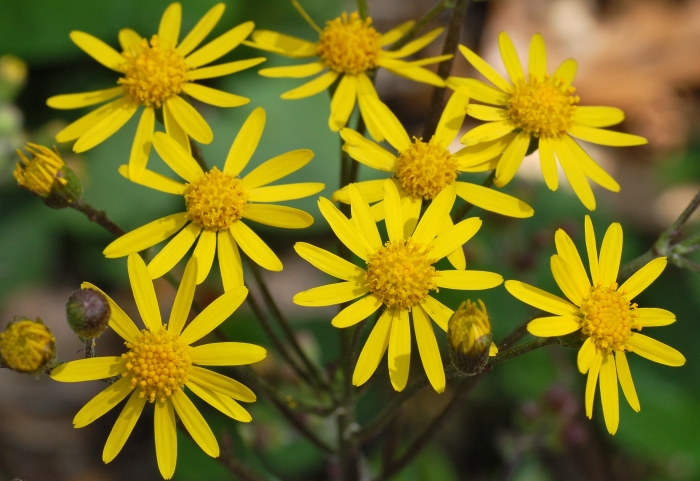Golden Ragwort
(Packera aurea)
Golden Ragwort (Packera aurea)
/
/

(c)2007 Derek Ramsey (Ram-Man)
GFDL 1.2
Image By:
(c)2007 Derek Ramsey (Ram-Man)
Recorded By:
Copyright:
GFDL 1.2
Copyright Notice:
Photo by: (c)2007 Derek Ramsey (Ram-Man) | License Type: GFDL 1.2 | License URL: http://www.gnu.org/licenses/old-licenses/fdl-1.2.html | Uploader: Ram-Man | Publisher: Wikimedia Commons | Title: Golden_Ragwort_Senecio_aureus_Flowers_2616px.jpg | Notes: == Summary == {{Information |Description=Paeonia lactiflora |Source= own |Date=2006 |Author=Ulf Eliasson }} [[Category:Paeonia]] == Licensing == {{self2|GFDL|cc-by-sa-2.5,2.0,1.0}} |




















































Estimated Native Range
Summary
Packera aurea, commonly known as Golden Ragwort, is a perennial herb native to moist meadows, floodplains, and swampy woodlands in eastern North America, ranging from Labrador to Minnesota and from North Carolina to Arkansas, with additional populations in the panhandle of Florida. It typically grows to a height of 1-2 feet (30-60 cm) and spreads to a width of 1-1.5 feet (30-45 cm). Golden Ragwort has a basal rosette of dark green, heart-shaped leaves, and in the spring, it produces clusters of bright yellow, daisy-like flowers that are quite showy and attract pollinators.
Golden Ragwort is valued for its early spring flowers and its ability to thrive in wet, shady conditions, making it a useful plant for rain gardens, woodland gardens, and naturalized areas. It is also used for erosion control on moist, sloped sites. In cultivation, it prefers full sun to part shade and requires consistently moist soil with medium to slow drainage. While it is adaptable to a range of soil types, it does best in rich, loamy soils. Golden Ragwort can spread aggressively by rhizomes and self-seeding, which should be considered when planting in small garden spaces to prevent unwanted spread.CC BY-SA 4.0
Golden Ragwort is valued for its early spring flowers and its ability to thrive in wet, shady conditions, making it a useful plant for rain gardens, woodland gardens, and naturalized areas. It is also used for erosion control on moist, sloped sites. In cultivation, it prefers full sun to part shade and requires consistently moist soil with medium to slow drainage. While it is adaptable to a range of soil types, it does best in rich, loamy soils. Golden Ragwort can spread aggressively by rhizomes and self-seeding, which should be considered when planting in small garden spaces to prevent unwanted spread.CC BY-SA 4.0
Plant Description
- Plant Type: Herb
- Height: 3-4 feet
- Width: 0.5-1.5 feet
- Growth Rate: Moderate
- Flower Color: Yellow
- Flowering Season: Spring
- Leaf Retention: Evergreen, Semi-Deciduous
Growth Requirements
- Sun: Full Sun, Part Shade
- Water: Medium
- Drainage: Medium, Slow
Common Uses
Bee Garden, Bird Garden, Butterfly Garden, Erosion Control, Groundcover, Low Maintenance, Showy Flowers, Street Planting, Water Garden
Natural Habitat
Moist meadows, floodplains, and swampy woodlands
Other Names
Common Names: Golden Groundsel, Golden Squaw-Weed, Heart-Leaf Groundsel, Liferoot, Squaw-Weed, Heart-Leaved Groundsel, Simply Ragwort, Séneçon Doré
Scientific Names: , Packera aurea, Senecio aureus, Senecio aureus var. intercursus, Senecio aureus var. gracilis, Senecio aureus var. aquilonius, Senecio obtusatus, Senecio aureus var. ashei, Senecio tussilaginoides, Senecio gracilis
GBIF Accepted Name: Packera aurea (L.) Á.Löve & D.Löve